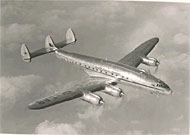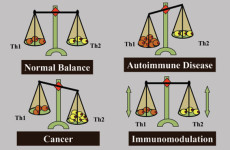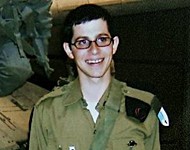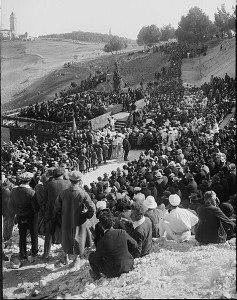 The Hebrew University of Jerusalem is Israel’s oldest and largest university. It has been ranked as one of the 100 most outstanding academic institutions in the world. The First Board of Governors included Albert Einstein , Sigmund Freud , Martin Buber andChaim Weizmann.
The Hebrew University of Jerusalem is Israel’s oldest and largest university. It has been ranked as one of the 100 most outstanding academic institutions in the world. The First Board of Governors included Albert Einstein , Sigmund Freud , Martin Buber andChaim Weizmann.
One of the Zionist movement’s dreams was to establish a Hebrew university in the Land of Israel. The establishment of the university was proposed as far back as 1884 in the Kattowitz conference of the Hibbat Zion society. A major supporter of the idea was Albert Einstein, who bequeathed his papers and entire estate to the University. The cornerstone for the university was laid in 1918, and, seven years later, on April 1, 1925, the Hebrew University campus on Mount Scopus of Jerusalem was opened at a gala ceremony attended by the leaders of the Jewish world, distinguished scholars and public figures, and British dignitaries, including Lord Arthur James Balfour, Viscount Allenby and Sir Herbert Samuel. The university’s first Chancellor was Judah Magnes. By 1947, the University had grown to become a large, well-established research and teaching institution.
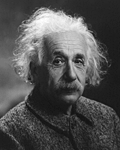
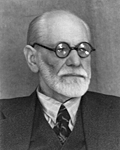
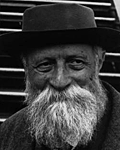
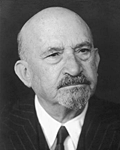
Mount Scopus in Hebrew: ‘Har Htzofim’, which overlooks the Old City of Jerusalem. Today nearly 24,000 students study on the four campuses of the University: Mount Scopus Campus houses: the Faculty of Humanities and School of Education; Faculty of Social Sciences; Faculty of Law and Institute of Criminology; School of Business Administration; School of Occupational Therapy; School of Social Work & Social Welfare and the Rothberg International School.
There are 3 more Campuses in Israel that belong to the Hebrew University:
- Edmond Safra Givat Ram Campus houses the Faculty of Mathematics and Science and the School of Computer Science and Engineering;
- Ein Karem Campus houses the Hadassah Hebrew University Medical Center – Faculty of Medicine, School of Pharmacy, School of Public Health & Family Medicine, School of Nursing and the Faculty of Dental Medicine;
- Rehovot Campus houses the Faculty of Agricultural, Food & Environmental Quality Sciences, School of Nutritional Sciences and the School of Veterinary Medicine.
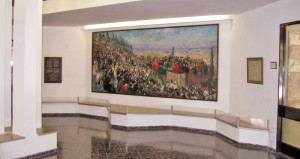
During the 1948 Arab-Israeli War, the Arabs repeatedly attacked the University, located to the northeast of Jerusalem, and convoys moving between the Israeli controlled section of Jerusalem and the University. After the attack on the Hadassah medical convoy in 1948, the Mount Scopus campus was cut off from the Jewish part of Jerusalem. When the Jordanian government reneged on the 1949 Armistice Agreements and refused Israeli access to the Mount Scopus campus, the University was forced to build a new campus in Givat Ram in western Jerusalem, which was completed in 1953. In the interim, the university rented part of the Terra Sancta building in Rehavia from the Franciscan Custodians of the Latin Holy Places and held classes there. After the reunification of Jerusalem in the Six-Day War of June 1967, the University was able to return to its original campus in Mount Scopus, which had to be reconstructed. In 1981 the construction work was completed, and the Mount Scopus campus again became the main campus of the University.
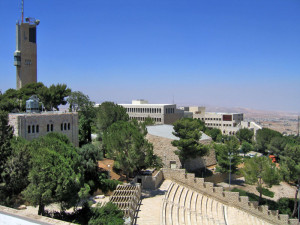
The university was again touched by conflict on July 31, 2002, when a Palestinian construction worker (a resident of East Jerusalem) exploded a bomb in the university’s crowded “Frank Sinatra” cafeteria during lunch time. Nine people – five Israeli citizens, three American citizens, and one citizen of both France and the United States were killed by the explosion and many more injured. Hamas claimed responsibility for the attack. World leaders including Kofi Annan, President Bush, and the President of the European Union issued statements of condemnation.
The Jewish National and University Library is the central and largest library of Hebrew University and one of the most impressive book and manuscript collections in the world. It is also the oldest section of the university. Founded in 1892 as a world center for the preservation of books relating to Jewish thought and culture, it assumed the additional functions of a general university library in 1920. Its collections of Hebraica and Judaica are the largest in the world. It houses all materials published in Israel, and attempts to acquire all materials published in the world related to the country. It possesses over 5 million books and thousands of items in special sections, many of which are unique. Among these are the Albert Einstein Archives, Hebrew manuscripts department, Eran Laor map collection, Edelstein science collection, Gershom Scholem collection, and a unique collection of Maimonides’ manuscripts and early writings. These culturally rich repositories are a destination for tourists, along with the university’s students.
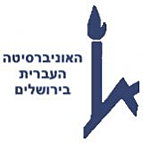
The Hebrew University is open to all academically qualified applicants, regardless of nationality, race, creed, color or religion. Studies are offered on the undergraduate, graduate and doctoral levels and postgraduate diploma programs.The Hebrew University enjoys a worldwide reputation in many fields. It is home to the world’s largest Jewish studies library, and some of the world’s most eminent scholars have been faculty members, among them Gershom Scholem, Yeshayahu Leibowitz, Daniel Kahneman and Robert Aumann. Four of Israel’s prime ministers are alumni of the Hebrew University, including the current prime minister.


